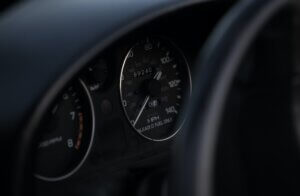Fire Damage for Soot Cleaning Guide in Vehicles
Fire Damage for Soot Cleaning Guide in Vehicles
Summary
This comprehensive guide outlines the step-by-step process for cleaning and restoring fire-damaged vehicles. It covers essential safety measures, professional assessments, insurance claims, and specialised cleaning methods for debris removal and soot cleaning. It also addresses odour elimination, electrical system checks, professional restoration, and post-cleanup maintenance. Legal compliance and FAQs on soot cleaning are included, emphasising the importance of professional intervention for extensive damages.
Fire damage in a vehicle is a disastrous event that demands prompt action. To mitigate further loss, it’s crucial to clean and restore the vehicle professionally. This comprehensive guide serves as your roadmap for effective fire damage and soot cleaning within vehicles.
Safety Precautions
Before you even touch your fire-damaged vehicle, it’s essential to gear up for safety. Wear protective eyewear, gloves, and masks to prevent inhalation of toxic fumes and contact with hazardous debris, especially while soot cleaning.
Assessment
Start with a thorough inspection to gauge the extent of the fire damage and required soot cleaning. It’s advisable to consult a certified professional for an accurate assessment. Look for smoke residue, burn marks, and water damage from firefighting efforts.
Insurance
Contact your insurance provider immediately to report the incident. Make sure to document the damage meticulously, with photographs and videos.
Removing Debris: A Step-By-Step Guide
- Use Industrial Vacuums
To the begin soot cleaning process, use an industrial vacuum cleaner. Do not use domestic vacuums as they can disperse soot into the air.
- Wipe Down Surfaces
Utilise chemical sponges to clean hard surfaces like dashboards and windows. These sponges are made specifically for soot cleaning and grime removal.
- Clean Fabric and Upholstery
For fabric seats and upholstery, use a specialised cleaner designed to tackle smoke damage. Make sure to test the cleaner on a small area first.
Odour Elimination: Using Ozone Generators
For persistent odours that regular cleaning methods can’t tackle, consider using an ozone generator. This device neutralises the smell by breaking down odour molecules.
Electrical Systems: Check and Repair
Fire can severely damage the electrical systems of a vehicle. Consult a qualified auto-electrician to inspect the wiring, fuses, and electrical components thoroughly.
Professional Restoration: When to Call in the Experts
Certain tasks like repairing the vehicle’s body or replacing damaged parts must only be undertaken by certified mechanics. This ensures your vehicle’s longevity and preserves its resale value.
Maintenance: Post-Cleanup
After soot cleaning, your vehicle needs regular maintenance checks to ensure there are no lingering issues. It’s advisable to follow a strict maintenance schedule for at least six months post-recovery.
Legal Compliance: Meeting State Standards
In most states, vehicles that have suffered fire damage need to pass specific inspections to be considered road-worthy again. Ensure you meet all legal requirements before driving the vehicle.
Restoring a fire-damaged vehicle is not just about aesthetics; it’s a comprehensive process involving safety checks, soot cleaning, and regular maintenance. While some tasks can be handled independently, it’s often best to consult professionals for specialised and in-depth work.
FAQs
What is the Best Method for Cleaning Soot?
The most effective method for cleaning soot is using a combination of industrial vacuums and chemical sponges specifically designed for soot removal. Industrial vacuums help in removing loose soot particles, while chemical sponges can effectively clean soot from hard surfaces like walls and furniture.
Is it Safe to Clean Soot by Myself?
While minor soot cleaning can be a DIY task, it’s crucial to take safety precautions like wearing protective eyewear, gloves, and masks. For extensive soot damage, particularly after a fire, it’s advisable to consult professional cleaning services that specialise in fire damage restoration.
Can Household Cleaning Products Remove Soot?
Common household cleaning products are generally not effective for soot removal and may even smear the soot, making it more challenging to clean. Specialised cleaners designed for soot and smoke damage are the best choice for effective cleaning.
Why Choose AllAces?
AllAces Cleaning & Restoration has more than 35 years of industry experience, servicing both domestic and commercial clients. Our IICRC-certified technicians understand the complexities of fire damage restoration and soot cleaning. At AllAces, we utilise advanced technology and equipment to ensure the best results and the return of a pre-loss condition.



